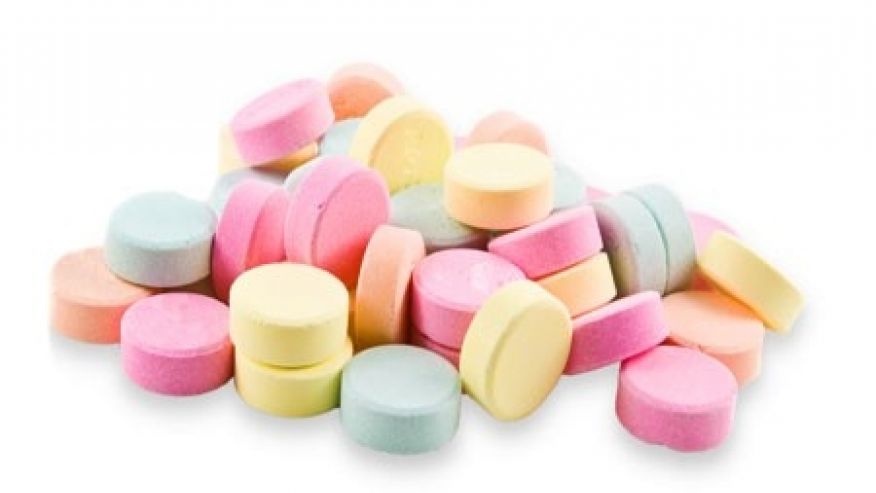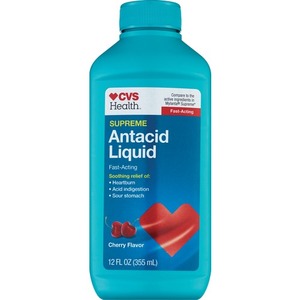What are Antacids?
Antacids are chemical compounds that are able to raise the stomach's pH above 3.5 in ten minutes by neutralizing gastric acid and are good for short term treatment of mild reflux episodes as they tend to only last about one to two hours per dose.
What are Antacids Made Of?

The following ingredients, or a combination of them are typically found in antacids:
- Sodium Bicarbonate
- Calcium Bicarbonate
- Magnesium Hydroxide
- Aluminum Hydroxide
How Do Antacids Work?
We could go into the blah, blah blah of gastric acid is hydrochloric acid or HCI and that it consists of hydrogen and chloride ions. It is the hydrogen ions that give acid it's caustic and damaging properties. Antacids can attract and hold onto the hydrogen ions. Grabbing up the hydrogen makes the pH of the stomach less acidic.
But why do you need to know that? Well... you don't really.
What you need to know is that if your baby is suffering from reflux symptoms for more than a week and is starting to show signs of pain and discomfort you should probably look for a longer term solution.
According to new guidelines, chronic antacid therapy is generally not recommended in pediatrics for the treatment of GERD. [CLINICAL REPORT Gastroesophageal Reflux: Management Guidance for the Pediatrician from The American Academy of Pediatrics].
What are antacids recommendations?
You must work with the guidance of a medical doctor for any medication and that includes antacids as they are considered a drug. Most recommend a maximum of three doses a day and can used between doses of other treatments such proton pump inhibitors but you should time 1 hour before or after the PPI dose and should also be timed one hour before or after a meal.

Mylanta Cherry Supreme or generic versions (now known as CVS Cherry Supreme)
Although it is not indicated for infants under the age of 12 months without the supervision of your doctor our doctors have recommended it for use.
Other brands include Tums or Maalox. Although Maalox contains aluminum and you should stay away from products that contain aluminum at any age.
Antacids should not be taken with.
- Delayed release proton pump inhibitors:
Antacids dissolve the protective enteric coating that surrounds delayed release PPI drugs and exposing the drug to the stomach acid, which will destroy the PPI drug. It's best to space the dose of an antacid from a delayed release PPI by at least if 1 hour. (if in powder form, you'll know it's delayed release because it will contain pellets in with the powder) - Sucralfate:
Sucralfate requires acid in order to be converted to it's active form. By neutralizing the acid in the stomach using antacids it inhibits this conversion.
- Some antacids have rapid onset, while others have more sustained action. Your doctor may combine antacids to take full advantage of the properties of the different types of antacid, as well as minimize adverse effects or antagonize side effects (like diarrhea and constipation).
- May delay absorption rate of other drugs.
- May damage protective enteric coating on some drugs.
- Antacids with magnesium may have a laxative effect.
- Antacids with aluminum may cause constipation and has been linked to organic brain disease in children, and and Alzheimer's in adults.
- Patients with lactose intolerance should be aware of antacids containing milk products.